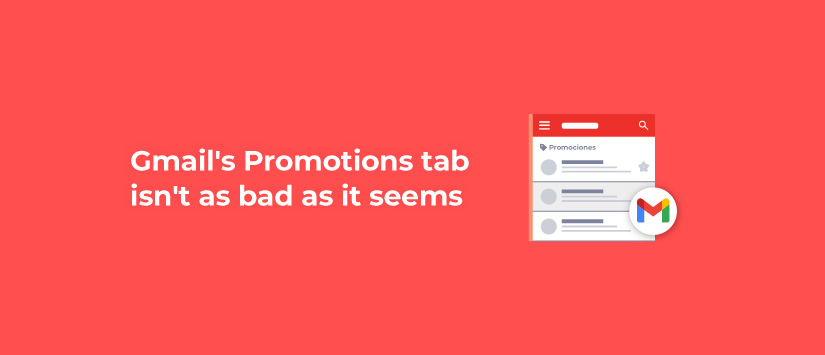Category: Email Marketing

The Gmail Promotions tab was created in 2013 and at the time some experts predicted that the open rate would decrease because all promotional emails would be displayed in a folder that users would consider as a ‘junk folder’. The truth is that its use does have an effect on your email marketing, but it is not as negative as predicted, it even has some advantages.
Until Gmail implemented its tabs, the user was the only one who could categorise incoming emails. Since then, Outlook, Yahoo and Apple have created their own terminology (Inbox, Subscriptions, Updates...) and do not necessarily categorise messages in the same way, although the spirit is the same: to help the user automatically identify and organise their inbox.
When you have the default Gmail Inbox option configured, it is possible to choose to display the following tabs or categories:
If you send an email marketing campaign, Gmail will most likely consider it a promotion, because it really is, and will display it in that tab. The criteria it uses to make this decision have to do with both the sender and previous interaction with similar messages and, of course, the content of the email. You can try to get out of this tab, but you may end up with the opposite effect.
The default inbox is not the only option offered by Gmail, so the user can configure it with all the tabs we have just mentioned, some or none of them. According to ZeroBounce, 22% of the users do not have this option activated and Google does not provide data on how many of its users use it. As there is no way of knowing which of your contacts have it activated, it is only possible to have as a reference to worry about this configuration the percentage that opens your communications from Gmail.
In reality, the email manager only makes a first categorisation of messages: ultimately it is the user himself who decides how to organise them. On the one hand, you can move messages between tabs to determine where you want the next messages to go. On the other hand, they can define filters, for example to choose the category assigned to a message, mark it as read or highlight it.
The same ZeroBounce study says that 25% of users never looks at the Promotions tab, but 19% of them do so every day and the 34% just a few times. It is clear that enough time has passed since its implementation to get used to visiting the tabs with some frequency. It's not like the spam folder, where your message is sure to go unnoticed, categories are like other inboxes with valuable content that you can visit when you have time to read.
The users who have configured the inbox to make this distinction between categories of messages want to optimize their time, so they may receive many messages per day. Standing out among so many emails is more difficult than in the Promotions tab because there will only be other commercial communications there, not urgent personal messages that also compete for the attention of subscribers.
Using BIMI is always a way for your brand to be recognised over other senders. By displaying your logo, users may choose to open your messages first. If it also has a clear and direct subject line, all the better.
To give your email more visibility in the Promotions tab, you can use Gmail annotations:
In both cases it is necessary to add a series of codes in the HTML headers of the emails so that Gmail interprets them correctly and displays what we are interested in.
Finally, a good practice that will make users go to the Gmail Promotions tab to find your message is that it is of value to them and has a clear frequency, for example every Wednesday at 3pm. That way, if they are in the habit and want to open it, they will be more likely to go looking for it. It's the same with transactional emails: they know they are in the Notifications tab and go there when they expect them.
Do not miss anything from our blog and join our Telegram https://t.me/acrelianews
Haven't you tried Acrelia News yet?
If you like this post, you will like much more our email marketing tool: professional, easy to use.